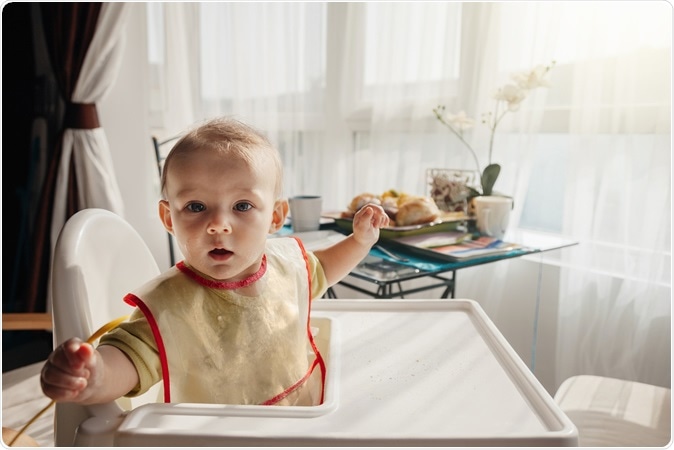Researchers have found that babies are capable of understanding a few words and their language development might be occurring earlier than we believed. The team used eye-tracking software to see that the babies recognized simple words like car, juice, stroller etc.
The findings of the study titled “The Nature and Origins of the Lexicon in Six-month-olds” were published in the latest issue of the Proceedings of the National Academy of Sciences on 20th of November 2017.

Image Credit: Zeljkodan / Shutterstock
Elika Bergelson, assistant professor of psychology and neuroscience at Duke University has been working on this for a while now. She explained that under the surface, the “language is definitely developing furiously” within babies. She had authored an earlier study showing that babies as young as 6 to 9 months can understand some words in language. Foods and body parts for example are the first things they learn to recognize and name inside their heads. For this new study they proved the babies’ knowledge of simple words using an eye tracking software.
The study team analyzed the home recordings and videos and saw that babies learn some common words that are used around them earlier. Bergelson explained that these babies already can relate the words to each other and comprehend the simple words and their meanings. She said this could also clue in researchers and care givers to those kids who are “at-risk for language delays or deficits” and start the interventions as early as possible.
For the study the team gave 51 babies and their care givers a computer screen along with some distracts for the babies. A pair of images was shown to the babies. These could be related words such as a hand and a foot or unrelated images such as a carton of milk and a foot. Only the baby could see the screen. The caregiver was prompted separately through a pair of headphones to name one of the objects that the baby could see. The direction in which the baby’s eyes moved was then recorded. The tests were carried out 32 times with different sets of images. Results showed that if the images were unrelated, the babies could gaze at the object that was named more certainly compared to when the images were related to each other. Bergelson said that the actual meaning of the word may not be clear to them but closer association might be possible for them to identify unrelated objects.
The team then wanted to see if the test results could translate at home environments. A total of 41 babies were given a colorful baby vest that carried an audio recorder and a hat that contained a small video recorder. Both were meant to record the baby’s interaction with the care giver. They eventually found out the amount of language exposure the baby was getting at home. For example how many objects were named and who was naming the objects or speaking to the baby etc. Very naturally they noted that if the object the parents were talking about was present in front of the baby, he or she could comprehend it better. She explained that if the parent held up a toy or a thing such as a toy car or a sipper full of juice to the baby, the comprehension was better rather than saying “tomorrow we are going to see the lions at the zoo”, where the baby has no clear idea what the parent is talking about.
Bergelson urged parents to talk to their babies more and name the objects to enhance their language comprehension and learning. She said the babies should be treated as “real communicative partners”.